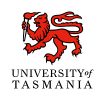 After recently switching on the new TPAC RDSI Node, we would like to announce that we have written the first byte of data and we are now pushing to move as much data as we can to this new resource.
After recently switching on the new TPAC RDSI Node, we would like to announce that we have written the first byte of data and we are now pushing to move as much data as we can to this new resource.
“RDSI provides researchers with greater access to their data, at much faster speeds and with greater reliability. With the new associated services we are bringing online later in the year researchers will have more variety than every before in how they can access data.
Coupled with the NeCTAR Research Cloud due for release in September Local and interstate researchers will have access to unprecedented storage and compute.”









You must be logged in to post a comment.